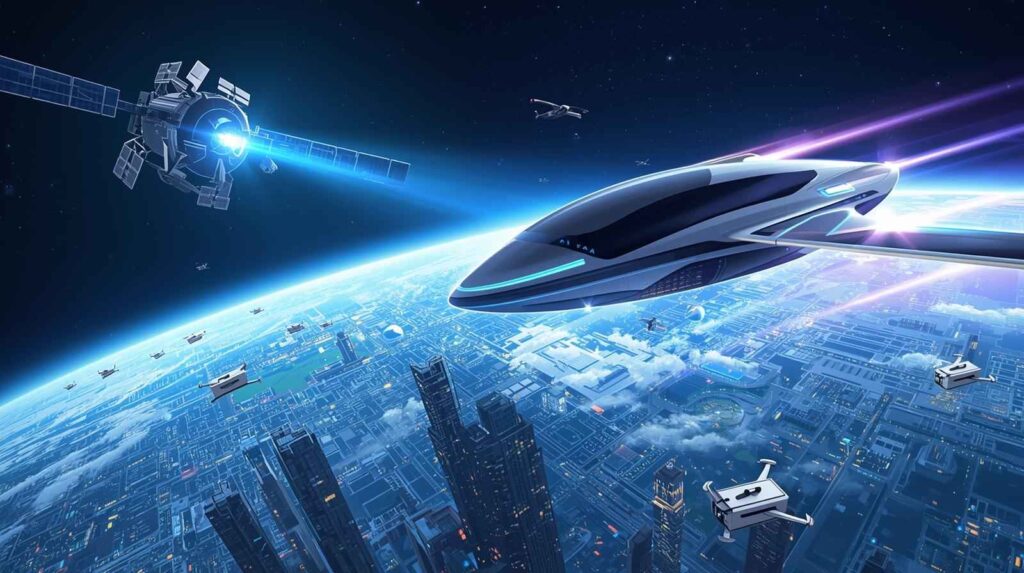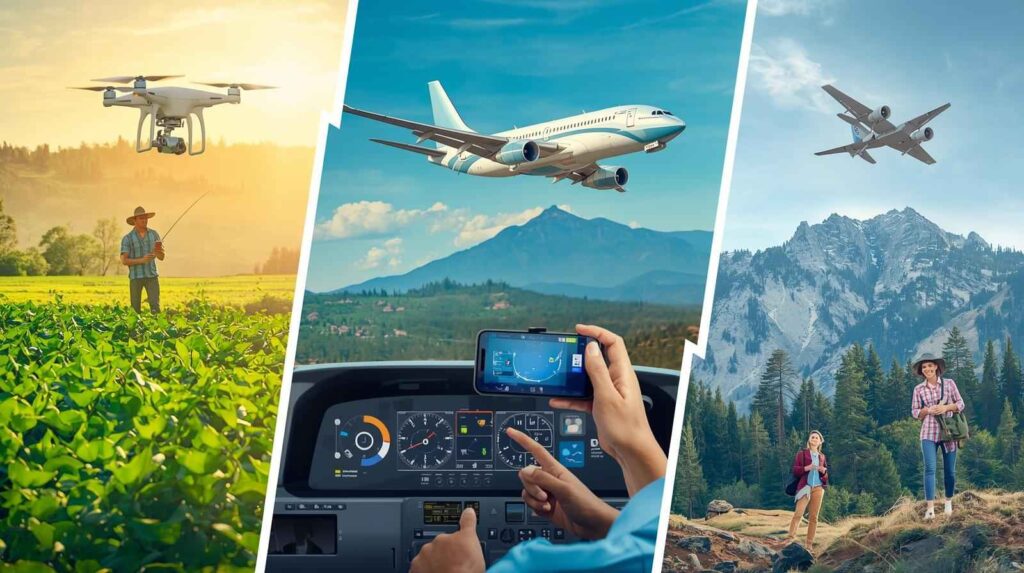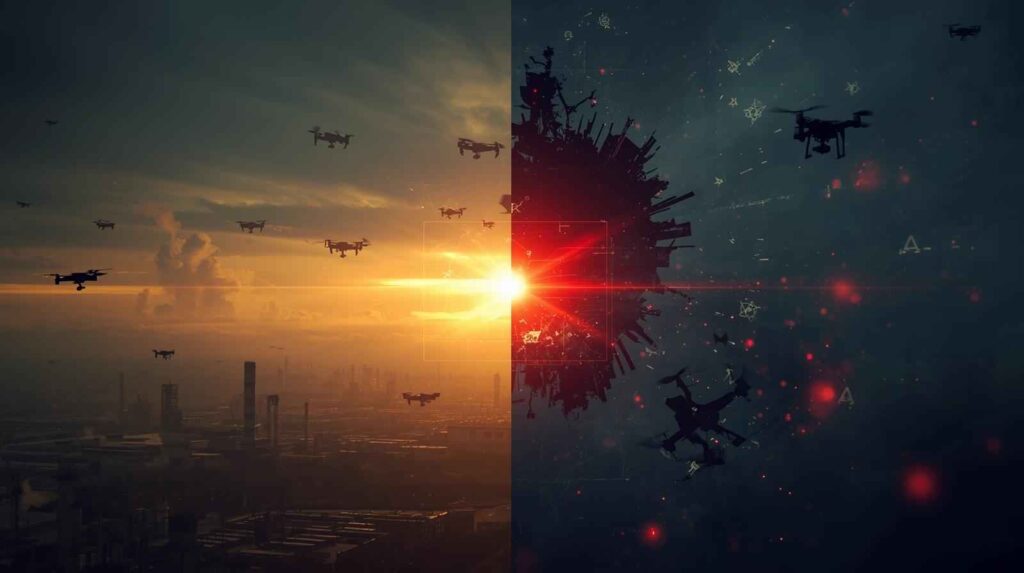Sky Technology:
The sky has always fascinated us, whether we gaze at the stars or watch planes streaking across the horizon. Today, that fascination has transformed into something tangible: sky technology. This term covers everything from satellite communications and drone networks to weather prediction systems and futuristic air mobility. It’s more than just science fiction; it’s technology shaping our daily lives.
I remember the first time I used satellite internet on a road trip through the mountains. Connectivity felt like magic, sitting in a place with no cell towers in sight, yet still able to video call my family. That moment made me realise how powerful sky technology really is. It’s not just about convenience; it’s about access, safety, and progress.
In this article, you’ll discover what sky technology really means, how it works, its current applications, and where it’s heading. You’ll also learn about the benefits, challenges, and the role it may play in industries ranging from communication to transport. By the end, you’ll have a clear view of why this field matters and how it could affect your future.
So, buckle up, because exploring sky technology is like taking a guided tour through innovation itself. And unlike a boring manual, I promise to keep this engaging, relatable, and yes, occasionally fun.

What is Sky Technology and Why It Matter
Sky technology refers to technological systems that use the atmosphere and outer space for practical applications. Think of satellites orbiting Earth, drones mapping landscapes, or sensors predicting storms. These technologies matter because they connect people, improve safety, and enable global communication, even in the most remote areas.
From GPS on your phone to weather updates on the news, sky technology already touches your life more than you probably realise. It matters because it has become an invisible backbone for modern society.

Key Innovations in Sky Technology
- Satellite Internet – Companies like Starlink and OneWeb are making global high-speed internet possible.
- Unmanned Aerial Vehicles (UAVs) – Drones are revolutionising delivery, agriculture, and surveillance.
- Weather Monitoring Systems – Advanced satellites track hurricanes, rainfall, and climate changes.
- Air Mobility – Flying taxis and autonomous air shuttles are moving from science fiction to reality.
- Defence Applications – Modern militaries rely on space-based technologies for navigation and security.
Each of these innovations isn’t just impressive, they’re reshaping how we live and interact with the world.

Real-World Applications of Sky Technolog
- Communication: High-speed global internet, emergency disaster communication.
- Navigation: GPS systems for cars, aviation, and shipping.
- Agriculture: Drones monitoring crops and optimising irrigation.
- Climate Research: Satellites collecting data on global warming.
- Transport: Testing electric vertical takeoff and landing (eVTOL) aircraft.
- Public Safety: Real-time disaster alerts and aerial monitoring during crises.
Sky technology moves beyond luxury. It saves lives and creates opportunities.

Benefits of Sky Technology
- Global Connectivity: Internet access in remote areas.
- Efficiency: Faster transport and logistics.
- Environmental Monitoring: Better data for fighting climate change.
- Economic Growth: New industries and jobs in aerospace and communication.
- Security: Improved defence systems and disaster management tools.
These benefits prove why governments and companies are pouring billions into this field.

Challenges and Limitations
- Cost: Launching satellites and developing air mobility tech is expensive.
- Regulation: Airspace laws struggle to keep up with drone swarms and flying taxis.
- Environmental Impact: Rocket launches and e-waste from satellites are concerns.
- Security Risks: Satellites and drones can be hacked or misused.
- Accessibility: High costs may exclude developing countries.
Progress is never free, it comes with obstacles that require innovation and collaboration.

How to Embrace Sky Technology in Daily Life
- Use satellite internet services if you live in remote areas.
- Adopt drone technology for farming, photography, or delivery.
- Stay informed through weather satellite apps and alerts.
- Explore career opportunities in aerospace, data analysis, or aviation tech.
- Support sustainable practices by backing eco-friendly aerospace companies.
You don’t need to be a scientist to engage with sky technology, you just need curiosity and openness to change.

Frequently Asked Questions (FAQ)
1. What exactly is sky technology?
Sky technology includes satellites, drones, weather systems, and other innovations that use the atmosphere or space for communication, navigation, and monitoring.
2. How does sky technology affect daily life?
It powers GPS, internet services, weather forecasts, disaster alerts, and even global financial systems.
3. Is sky technology expensive to implement?
Yes, launching satellites and developing UAVs is costly, but costs are falling as technology advances and competition grows.
4. What industries use sky technology the most?
Telecommunications, agriculture, aviation, defence, research, and logistics rely heavily on sky-based innovations.
5. What are the risks of sky technology?
Security vulnerabilities, environmental impact, and high development costs are the main risks.
6. What’s the future of sky technology?
Expect smarter satellites, cleaner rockets, urban air taxis, and more accessible global internet coverage

Future of Sky Technology: What to Expect
Looking ahead, sky technology will play a bigger role in:
- Smart Cities: Air taxis and drone deliveries.
- Space Tourism: Affordable travel beyond Earth’s atmosphere.
- Climate Action: Better data for environmental policies.
- Universal Internet: Connecting the unconnected.
- AI Integration: Smarter UAVs and automated airspace management.
The sky isn’t the limit anymore; it’s the starting point.

Conclusion
Sky technology is more than satellites and drones; it’s a web of innovations that touch almost every aspect of modern life. From improving connectivity to predicting natural disasters, it’s helping us live safer, smarter, and more connected lives.
Sure, there are challenges like cost, regulation, and environmental concerns. But history shows that with innovation comes progress. Just as aeroplanes once seemed impossible, the technologies we now dream about, like air taxis and global internet, are becoming reality.
The future is clear: sky technology will continue to expand its reach. Whether you’re a business owner, a farmer, or just someone streaming a movie in a remote village, it’s already impacting your life. The only question left is, are you ready to embrace it?

